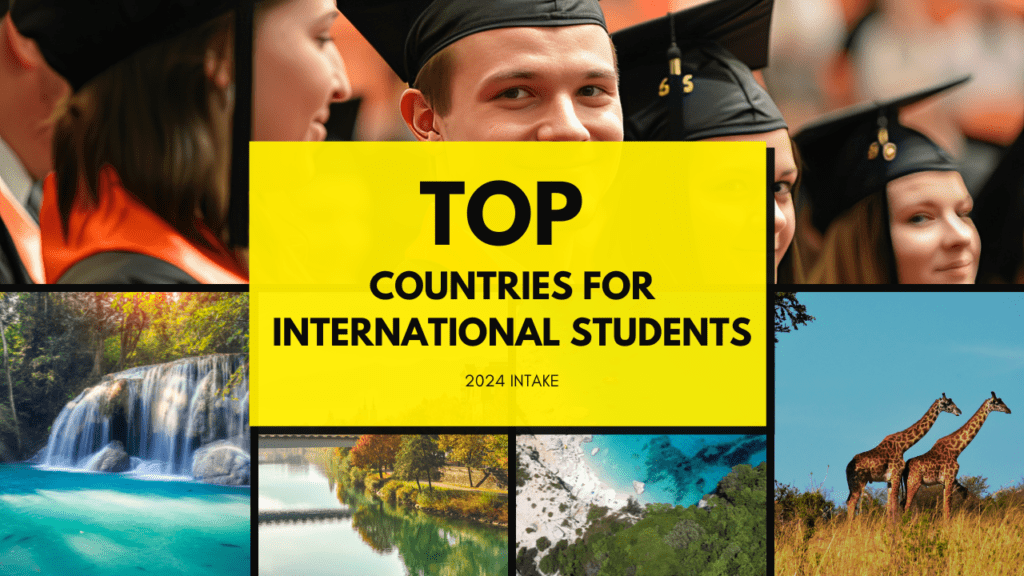Education remains a pivotal factor for global mobility, with students seeking quality education, better opportunities, and cultural experiences. By 2025, the landscape of international education is evolving with technological advancements, innovative programs, and increasing competition among countries.
Key Factors Influencing Students’ Choices
- Quality of Education:
- Universities with global rankings attract students worldwide.
- Research opportunities and renowned faculty enhance the appeal.
- Affordability:
- Tuition fees and living costs play a critical role.
- Scholarships and financial aid programs make countries competitive.
- Post-Graduation Opportunities:
- Work permits, job markets, and immigration policies influence decisions.
- Cultural Experience:
- A diverse and inclusive environment enriches the student journey.
- Opportunities for personal growth and networking are key.
- Language of Instruction:
- English-medium programs dominate international education.
- Accessibility for non-native speakers broadens appeal.
1. USA: Leading in Academic Excellence and Innovation
The USA remains a top choice for international students due to its diverse range of programs and prestigious universities.
- Why the U.S.?:
- Home to over 4,000 universities, including Ivy League institutions.
- Programs in emerging fields like Artificial Intelligence, Data Science, and Sustainability.
- Popular Universities:
- Massachusetts Institute of Technology (MIT)
- Stanford University
- University of California, Berkeley
- Key Benefits:
- Optional Practical Training (OPT) allows work experience.
- Cultural diversity in metropolitan areas like New York and California.
- Updates for 2025:
- Increased emphasis on hybrid learning models.
- New STEM-focused scholarships for international students.
2. UK: Tradition and Modernity in Education
The UK offers a rich educational heritage combined with modern teaching methods and facilities.
- Why the U.K.?:
- A blend of historical institutions and modern innovation.
- Shorter course durations for undergraduate and master’s programs.
- Popular Universities:
- University of Oxford
- University of Cambridge
- Imperial College London
- Key Benefits:
- Graduate Route visa allows 2 years of work post-study.
- Cultural proximity to Europe and global exposure.
- Updates for 2025:
- Extended funding options for STEM and creative fields.
- Increased collaboration with European universities post-Brexit.
3. Canada: Welcoming and Inclusive
Canada is known for its high quality of life, safety, and welcoming attitude towards international students.
- Why Canada?:
- Known for its welcoming environment and high quality of life.
- Affordable tuition fees compared to the U.S. and U.K.
- Popular Universities:
- University of Toronto
- McGill University
- University of British Columbia
- Key Benefits:
- Post-Graduation Work Permit (PGWP) up to 3 years.
- Pathways to permanent residency through Express Entry.
- Updates for 2025:
- Expansion of fast-track visa processing for international students.
- Introduction of new tech-focused programs in major universities.
4. Australia: World-Class Education in a Stunning Setting
Australia offers excellent educational opportunities and a relaxed, outdoor lifestyle.
- Why Australia?:
- Known for its excellent higher education system and scenic beauty.
- Emphasis on research and innovation.
- Popular Universities:
- Australian National University (ANU)
- University of Melbourne
- University of Sydney
- Key Benefits:
- High demand for skilled workers in healthcare, engineering, and IT.
- Post-study work visas up to 4 years.
- Updates for 2025:
- New scholarships for Asian and African students.
- Enhanced focus on environmental studies and sustainability.
5. Germany: Excellence in Engineering and Technology
Germany is renowned for its engineering and technology programs, along with its low or no tuition fees.
- Why Germany?:
- Tuition-free education at public universities.
- Strong emphasis on engineering, technology, and manufacturing programs.
- Popular Universities:
- Technical University of Munich (TUM)
- Heidelberg University
- Ludwig Maximilian University of Munich
- Key Benefits:
- Job opportunities in the thriving European economy.
- English-taught programs in major cities.
- Updates for 2025:
- Increased collaboration with global companies for internships.
- Digital transformation initiatives in education.
Emerging Destinations in 2025
- Netherlands:
- Increasing English-taught programs.
- Affordable compared to traditional destinations.
- Singapore:
- World-class education and strong industry links.
- Scholarships targeting Asian students.
- New Zealand:
- Safe environment and quality education.
- Growing focus on sustainability.
Comparative Analysis
| Country | Cost of Living | Work Opportunities | Cultural Diversity | Top Fields | Key Visa Policies |
|---|---|---|---|---|---|
| United States | High | Excellent | High | STEM, Business | OPT, H1-B |
| Canada | Moderate | Very Good | High | Tech, Healthcare | PGWP, PR pathways |
| United Kingdom | High | Very Good | Moderate | Arts, Engineering | Graduate Route visa |
| Australia | Moderate | Good | High | Environmental Studies, IT | Post-study work visa |
| Germany | Low | Good | Moderate | Engineering, Manufacturing | EU Blue Card, Job Seeker visa |
Conclusion: Summarizing the Top Picks for 2024
The choice of a study destination depends on personal preferences, career goals, and financial circumstances. With evolving global trends, countries are actively improving their offerings to attract international students. In 2025, the United States, Canada, the United Kingdom, Australia, and Germany lead the way, with emerging nations providing additional opportunities.



